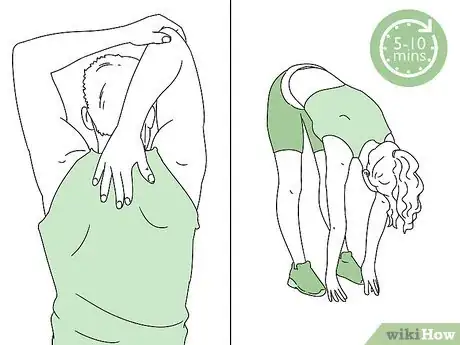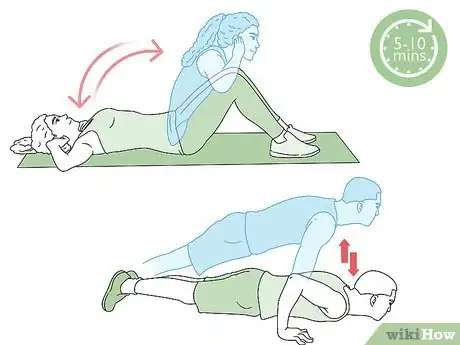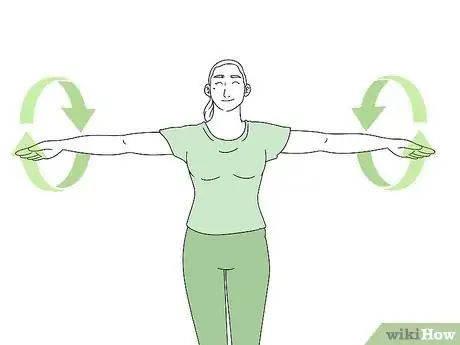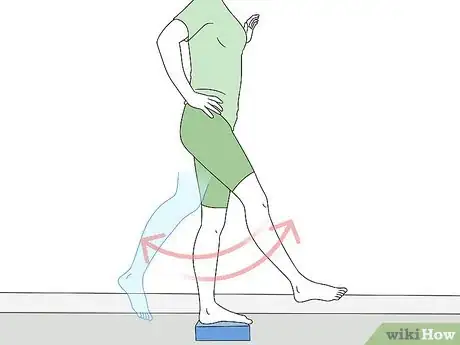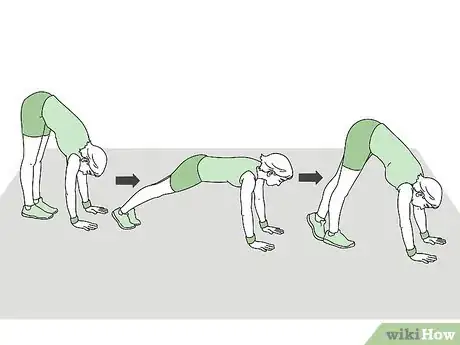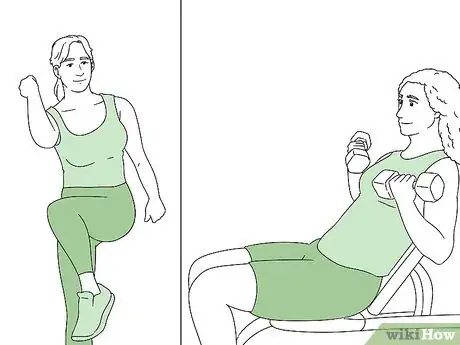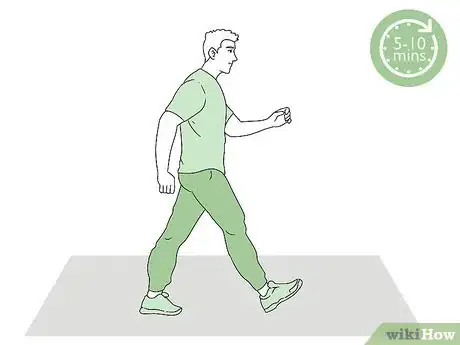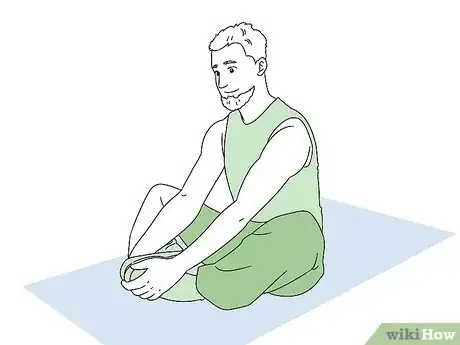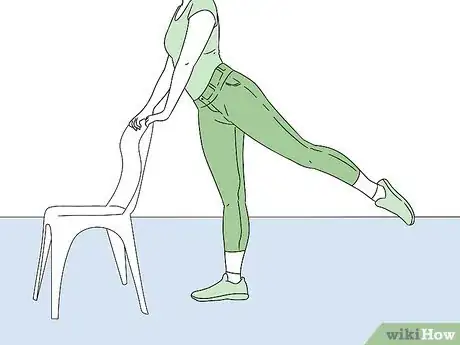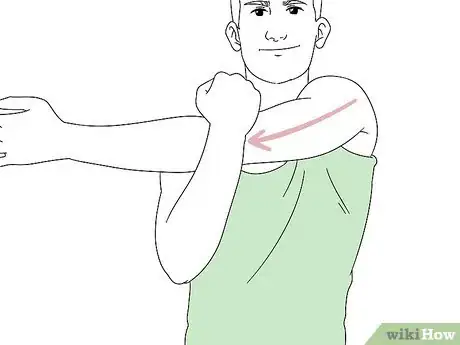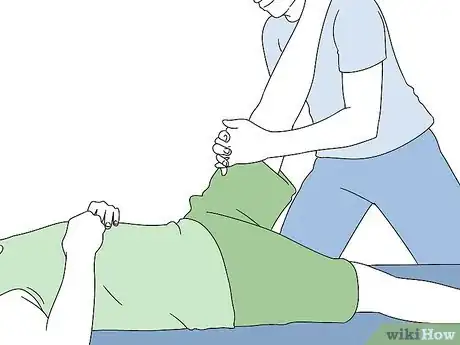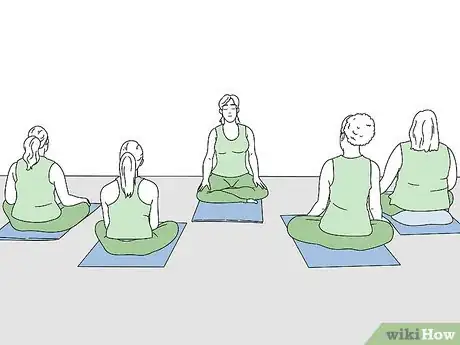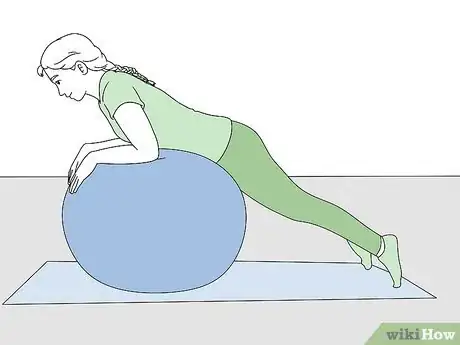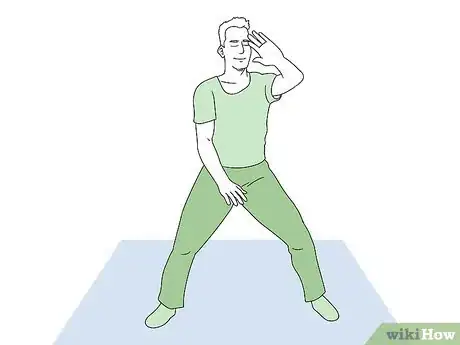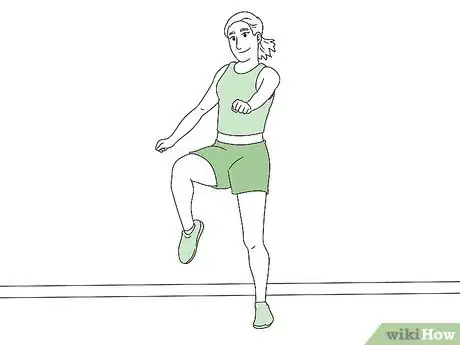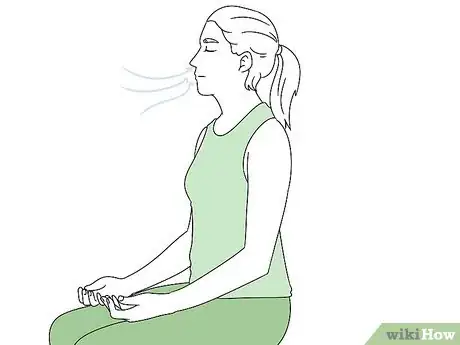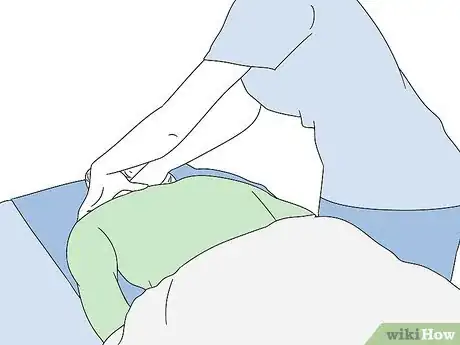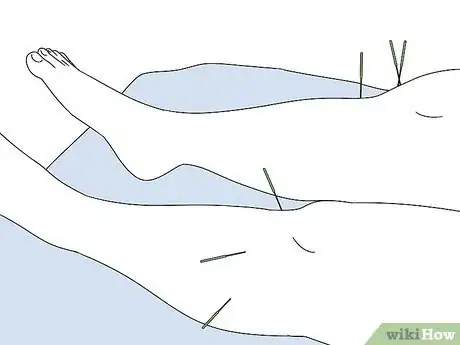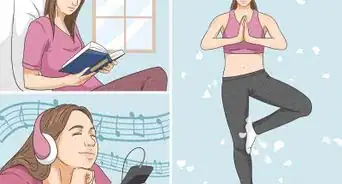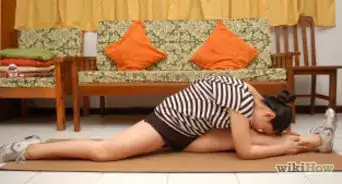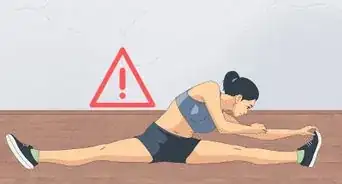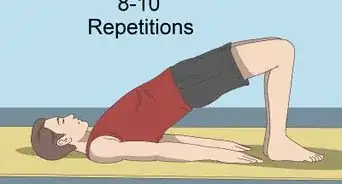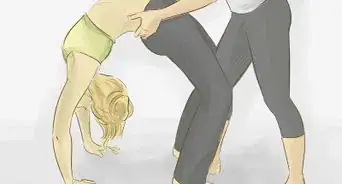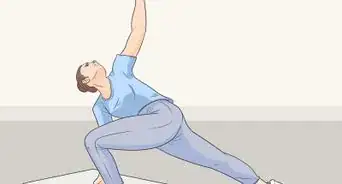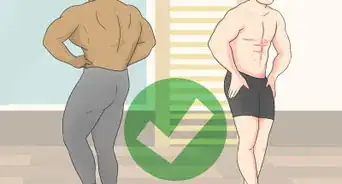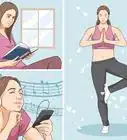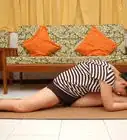This article was co-authored by Danny Gordon and by wikiHow staff writer, Christopher M. Osborne, PhD. Danny Gordon is an American College of Sports Medicine (ACSM) Certified Personal Trainer and Owner of The Body Studio for Fitness, a fitness studio based in the San Francisco Bay Area. With over 20 years of physical training and teaching experience, he has focused his studio on semi-private personal training. Danny received his Personal Trainer Certification from the California State University, East Bay and the American College of Sports Medicine (ACSM).
There are 17 references cited in this article, which can be found at the bottom of the page.
This article has been viewed 447,626 times.
Maintaining good flexibility can reduce your chance of injury and make it easier to live an active lifestyle. There's no magic way to improve flexibility overnight, but it’s a goal that most anyone can achieve with some patience and dedication. Focus on adding flexibility components both before and after your aerobic and strength-training exercise routines, and incorporate activities like yoga that benefit flexibility. Making some healthy lifestyle changes like drinking more water and cutting down on stress can also help you become more flexible.
Steps
Doing Pre-Workout Dynamic Stretches
-
1Warm up your muscles for 5-10 minutes before doing dynamic stretches. The old notion of doing static stretches—such holding a toe touch and triceps stretch—before working out has largely been abandoned. Instead, it’s better to loosen up your muscles and joints through light exercise and dynamic stretching, then do some static stretches after your primary workout is complete.[1]
- Depending on your fitness level, your warmup might involve biking, jogging, walking, or simply doing some light housework. Your goal is to work up a light sweat.
- Ideally, this warmup should last 10 minutes. If that’s not possible, aim for 5 minutes as the bare minimum.
- Talk to your doctor before starting any new exercise regimen, especially if you live a sedentary lifestyle or have existing health conditions.
-
2Follow up with 5-10 minutes of dynamic stretching.[2] Dynamic stretches continue the process of warming up your muscles and joints, while also prioritizing range of motion. Choose 3-5 dynamic stretches and do 3 sets of 20-30 reps. Classic dynamic stretches include sit-ups, push-ups, jumping jacks, lunges, and squats.[3]
- If you’d like to expand your dynamic stretching repertoire, try some of the options described in the remainder of this section.
Advertisement -
3Use arm circles to stretch your arms, shoulders, and upper body. Hold your arms out straight to either side so that you form a T. Make circles with your arms. Do this 20-30 times before reversing the direction. As you become more flexible, you can make the circles bigger.[4]
-
4Do leg swings to enhance flexibility in your hips and legs. Bracing yourself against a wall, swing your outside leg up like a clock pendulum. Increase the height of the swing with each return. Switch sides to do the other leg. You can do a similar exercise with your arms.[5]
- If you have balance concerns, do this exercise only when you have a sturdy grab bar available to grasp with your supporting hand.
-
5Try walking lunges to stretch your core and legs. Take deep, exaggerated steps so that you’re nearly dropping to your knee with each step. You can add even more stretch by twisting your upper body away from the extended back leg with each movement.
- Stationary lunges, which can be done forward, backward, or to the sides, can also be used for dynamic stretching.
-
6Give inchworms a try if you can easily handle doing push-ups. Beginning in a push-up position, slowly walk until your feet are as close to your hands as you can get them. Once you’ve managed this, walk with your hands until you are back in the starting position. You can arch your back in order to add a spine stretch.
- Inchworms are great for stretching your core, back, and hamstrings.
-
7Complete your cardio or strength training workout. Following a regular routine of aerobic and muscle-building workouts will benefit your overall health as well as your flexibility. Consult with your doctor and, unless otherwise advised, aim for 150+ minutes of moderate-intensity aerobic exercise per week, as well as 2-3 strength training sessions (lasting around 30 minutes) per week.[6]
- During moderate-intensity aerobic exercise, you should be breathing hard enough that it’s difficult to carry on a full conversation. Swimming, biking, running, circuit training, rollerblading, and dancing can all function as aerobic exercises, among many other options.
- Instead of trying to max out on the amount of weight you’re lifting during your strength training workouts, focus on doing the full range of motion with proper technique during each exercise. For instance, cut back a bit on the weight for your bench presses so you can raise and lower the bar fully and smoothly.[7]
Using Static Stretches after Your Workout
-
1Follow your workout with a brief cool-down, then 5-10 minutes of static stretches.[8] After your main workout, do some light exercise, such as walking, for about 5 minutes as a brief cool-down. Then, do a series of static stretches for 5-10 minutes, holding each pose for at about 30-60 seconds. Focus on the muscle groups you just exercised, as well as your chest, lats, and hip flexors.[9]
- The overall workout order should be as follows: 1) warm-up (5-10 min.); 2) dynamic stretches (5-10 minutes); cardio or strength-training workout (approx. 30 min.); cool-down (5 minutes); static stretches (5-10 minutes).
- Check out the remainder of this section for several popular static stretches to try.
-
2Do static hamstring stretches while seated on the floor. Sit on the floor with your legs extended and spread apart. Reach forward to touch one foot at a time with your same-side finger tips, or get as close as you can to touching it without causing pain.[10]
- Bend your other leg if it makes the stretch less painful.
-
3Try butterfly groin stretches as another on-the-floor option. Sit on the floor. Pull both ankles in towards your crotch, getting your heels as close as you can to touching your crotch. Press your knees to the floor, if you’re able, to increase the stretch.[11]
-
4Use the “tush push” stretch to add flexibility to your glutes. Stand up and keep your feet as wide as possible while you hold onto the back of a chair. Push your rear end to one side and hold. Then push it to the other side and hold.
- This stretch will also benefit your hip flexors.
-
5Do the classic shoulder stretch across your chest. Use your opposite arm to pull your elbow across the front of your body, towards the opposite shoulder, pressing against your arm as you do so. Keep the arm you’re stretching straight and level, and keep your head facing forward.[12]
- The arm that’s being stretched should rest right beneath your chin.
-
6Try the contract-relax method instead of static stretches. These stretches are a bit more complex, so consider getting instruction from a personal trainer first. Move into your chosen stretch, then release the stretch and contract the muscles in the area for 5 seconds. Release the contraction and relax the muscles while moving into the stretch again. Do 2-3 contractions per stretch.[13]
- Try to engage the stretch a bit further after each contraction. Stop extending the stretch if you feel anything more than mild pain, however.
- This method is sometimes called PNF (for proprioceptive neuromuscular facilitation).
- PNF is based on the concept that stretching increases flexibility not by lengthening your muscles, but rather by training your nerves in the area to accept greater muscle stretching before engaging pain and muscle contraction responses.
Doing Exercise Programs that Promote Flexibility
-
1Join a yoga class that suits your condition and needs. Yoga is a meditation and exercise technique which has been shown to reduce stress and anxiety. It’s also excellent for building better balance and flexibility. Find a local group to practice with or take a class from a local gym or community center.[14]
- Look for a class and instructor that meet your current experience level and health needs. For instance, if you have limited flexibility due to arthritis, find a program that’s suited to your circumstances.
- Try doing yoga 2-3 times per week, alternating days with your other workout programs (such as jogging and lifting weights). Yoga doesn’t count toward your 150+ minutes of weekly aerobic exercise, but it may count as a strength-training session based on your current condition.
- Don't try to start off with advanced poses since you could hurt or strain yourself. Start slowly and work your way up as you get more flexible.[15]
-
2Try Pilates as an alternative to yoga. Pilates uses a series of movements and forms, which makes it similar in ways to yoga. However, it also utilizes tools like exercise balls, weights, and resistance bands. Take a class from a local gym or community center, find a club at your university or retirement community, or find another local group to practice with.[16]
- As with yoga, find a class that suits your current ability level and health condition.
- Also like yoga, Pilates can in some cases count toward your weekly strength-training goal, but it typically isn’t considered aerobic exercise.
-
3Look into tai chi as another flexibility-promoting exercise activity. The various forms of tai chi all have their roots in the martial arts, and they focus on combining flowing body movements with deep breathing and relaxation techniques. Therefore, tai chi is another great choice for improving your range of motion and flexibility, not to mention reducing stress.[17]
- Check your community for tai chi classes that suit your skill and fitness levels.
- Like with yoga and Pilates, do tai chi 2-3 times per week as a complement to your aerobic and strength training programs.
-
4Attend a dancing-focused class like Zumba, or just dance! Unlike yoga, Pilates, or tai chi, dancing-focuses programs such as Zumba provide enough intensity to typically count as aerobic exercise. At the same time, dancing is a great way to improve your range of motion and, therefore, your flexibility. It’s also fun![18]
- Attending classes makes it easier to do specific exercise routines that suit your needs. However, dancing on your own time is also an excellent way to improve your flexibility.
Taking Additional Measures
-
1Drink water throughout the day to keep your muscles hydrated. Muscles that aren’t adequately hydrated become less flexible, and this problem tends to become more pronounced as people age. Making sure that you’re adequately hydrated will help to counteract this issue, and you may see flexibility improvements as a result.[19]
- Don’t wait until you’re thirsty to drink water. Have a glass when you wake up, before each meal, and before you go to bed. Carry a water bottle with you so you can take sips throughout the day. Drink water before, during, and after your workouts.
-
2Try deep breathing and other stress reduction techniques. Stress causes your muscles to tense up, which naturally reduces your flexibility. By reducing the amount of stress in your life, you can help reverse this problem and make your flexibility workouts more effective. Deep breathing exercises may be particularly useful in both relieving stress and improving muscle flexibility.[20]
- Deep breathing isn’t the best stress-busting choice for everyone, so find what works best for you. It might be gentle exercise, meditation or prayer, exploring nature, listening to relaxing music, reading a good book, or talking to a close friend, to name just a few examples.
-
3Get regular massages from a trained professional. Deep muscle massage techniques, such as neuromuscular, rolfing, and myofascial release, are designed to address issues that may be reducing your flexibility. For the best results, go to a massage therapist who is specially trained in these modalities. See if your doctor can provide a referral, and ask friends and family for referrals as well.[21]
- You may see results, for instance, from combining a weekly massage session with your flexibility-promoting exercise routines.
- General massage techniques can help as well, since they can improve circulation to the muscles, helping them to repair any damage.
-
4See if using a hot tub or sauna works for you. The moist heat created in these environments may relax your muscles and aid flexibility. Try using these options in conjunction with other flexibility-promoting methods, however, as you’re unlikely to see much benefit from either option alone. Hot tubs and saunas are often found at local fitness clubs and community pools.[22]
- Using a hot tub or sauna may not be a good choice if you are pregnant, have heart disease, or are dealing with other medical conditions. Talk to your doctor first.
-
5Consider acupuncture as a potential way to improve flexibility. It’s possible, though not certain, that acupuncture may be able to help improve flexibility. At any rate, acupuncture does seem to help relieve muscle pain and improve blood flow, both of which can help you to recover from workouts faster.[23]
- Choose a trained, experienced acupuncture practitioner who utilizes proven and hygienic techniques. If possible, choose a practitioner with particular expertise in acupuncture for flexibility.
Expert Q&A
-
QuestionHow long will it take for me to improve my flexibility?
 Danny GordonDanny Gordon is an American College of Sports Medicine (ACSM) Certified Personal Trainer and Owner of The Body Studio for Fitness, a fitness studio based in the San Francisco Bay Area. With over 20 years of physical training and teaching experience, he has focused his studio on semi-private personal training. Danny received his Personal Trainer Certification from the California State University, East Bay and the American College of Sports Medicine (ACSM).
Danny GordonDanny Gordon is an American College of Sports Medicine (ACSM) Certified Personal Trainer and Owner of The Body Studio for Fitness, a fitness studio based in the San Francisco Bay Area. With over 20 years of physical training and teaching experience, he has focused his studio on semi-private personal training. Danny received his Personal Trainer Certification from the California State University, East Bay and the American College of Sports Medicine (ACSM).
Certified Personal Trainer It will take some time, but don't try to overexert yourself right away. Start slowly and work your way up to more advanced stretches so you don't get hurt.
It will take some time, but don't try to overexert yourself right away. Start slowly and work your way up to more advanced stretches so you don't get hurt. -
QuestionHow do you become more flexible?
 Michele DolanMichele Dolan is a BCRPA certified Personal Trainer in British Columbia. She has been a personal trainer and fitness instructor since 2002.
Michele DolanMichele Dolan is a BCRPA certified Personal Trainer in British Columbia. She has been a personal trainer and fitness instructor since 2002.
Certified Fitness Trainer Stretching and relaxing the muscles improve flexibility. Learning yoga is perhaps the easiest and best way to become more flexible.
Stretching and relaxing the muscles improve flexibility. Learning yoga is perhaps the easiest and best way to become more flexible. -
QuestionWhat activities can you do to improve your flexibility?
 Michele DolanMichele Dolan is a BCRPA certified Personal Trainer in British Columbia. She has been a personal trainer and fitness instructor since 2002.
Michele DolanMichele Dolan is a BCRPA certified Personal Trainer in British Columbia. She has been a personal trainer and fitness instructor since 2002.
Certified Fitness Trainer Try a yoga class or a stretching class to learn how to stretch your tight places and learn to relax those muscles. Massage can also help.
Try a yoga class or a stretching class to learn how to stretch your tight places and learn to relax those muscles. Massage can also help.
Warnings
- Stretching should not hurt. It should feel like a pulling sensation. Any pain or sudden sensations may be warning you of a potential injury.⧼thumbs_response⧽
References
- ↑ https://www.mensjournal.com/health-fitness/7-ways-improve-flexibility/
- ↑ Danny Gordon. Certified Personal Trainer. Expert Interview. 18 October 2019.
- ↑ https://www.mensjournal.com/health-fitness/7-ways-improve-flexibility/
- ↑ http://www.arthritis.org/living-with-arthritis/exercise/workouts/simple-routines/dynamic-stretching.php
- ↑ https://www.besthealthmag.ca/best-you/stretching/dynamic-stretching-try-forward-leg-swing/
- ↑ https://www.nhs.uk/live-well/exercise/how-to-improve-strength-flexibility/
- ↑ https://www.mensjournal.com/health-fitness/7-ways-improve-flexibility/
- ↑ Danny Gordon. Certified Personal Trainer. Expert Interview. 18 October 2019.
- ↑ https://www.yogajournal.com/practice/what-science-can-teach-us-about-flexibility
- ↑ https://www.medicalnewstoday.com/articles/323703.php
- ↑ https://www.basd.net/cms/lib/PA01001269/Centricity/Domain/1342/Glute%20Groin%20Stretches.pdf
- ↑ https://www.medicalnewstoday.com/articles/324647.php
- ↑ https://www.livescience.com/48744-how-does-stretching-work.html
- ↑ https://www.nhs.uk/live-well/exercise/guide-to-yoga/
- ↑ Danny Gordon. Certified Personal Trainer. Expert Interview. 18 October 2019.
- ↑ https://www.nhs.uk/live-well/exercise/guide-to-pilates/
- ↑ https://www.nhs.uk/live-well/exercise/guide-to-tai-chi/
- ↑ https://www.netdoctor.co.uk/healthy-living/fitness/a28264/how-to-improve-flexibility/
- ↑ https://www.mensjournal.com/health-fitness/7-ways-improve-flexibility/
- ↑ https://www.mensjournal.com/health-fitness/7-ways-improve-flexibility/
- ↑ https://www.mensjournal.com/health-fitness/7-ways-improve-flexibility/
- ↑ https://www.webmd.com/a-to-z-guides/hot-tubs-safety#1
- ↑ http://online.liebertpub.com/doi/abs/10.1089/acu.2010.0773
- Videos provided by Mind Body Soul
About This Article
Improving your flexibility takes time, but you can do it with a combination of stretches and moderate exercise. . Start each exercise routine with dynamic stretches, like arm circles, push-ups, or leg swings, to make sure your muscles are warm, which will reduce the chance of injury. After these stretches, begin a moderate exercise session, such as 30 minutes of running or cycling, which will strengthen your muscles and make them more flexible. Aim to exercise 5 times a week for a total of 150 minutes of cardio exercise. At the end of each session, cool down with static stretches on your major muscles, like your hamstring and shoulders, to improve their strength and flexibility. For faster results, try combining regular stretches and exercise with an activity designed to improve your movement and coordination, like yoga or pilates. To learn more about alternative methods for improving flexibility, like massage or acupuncture, read on!
